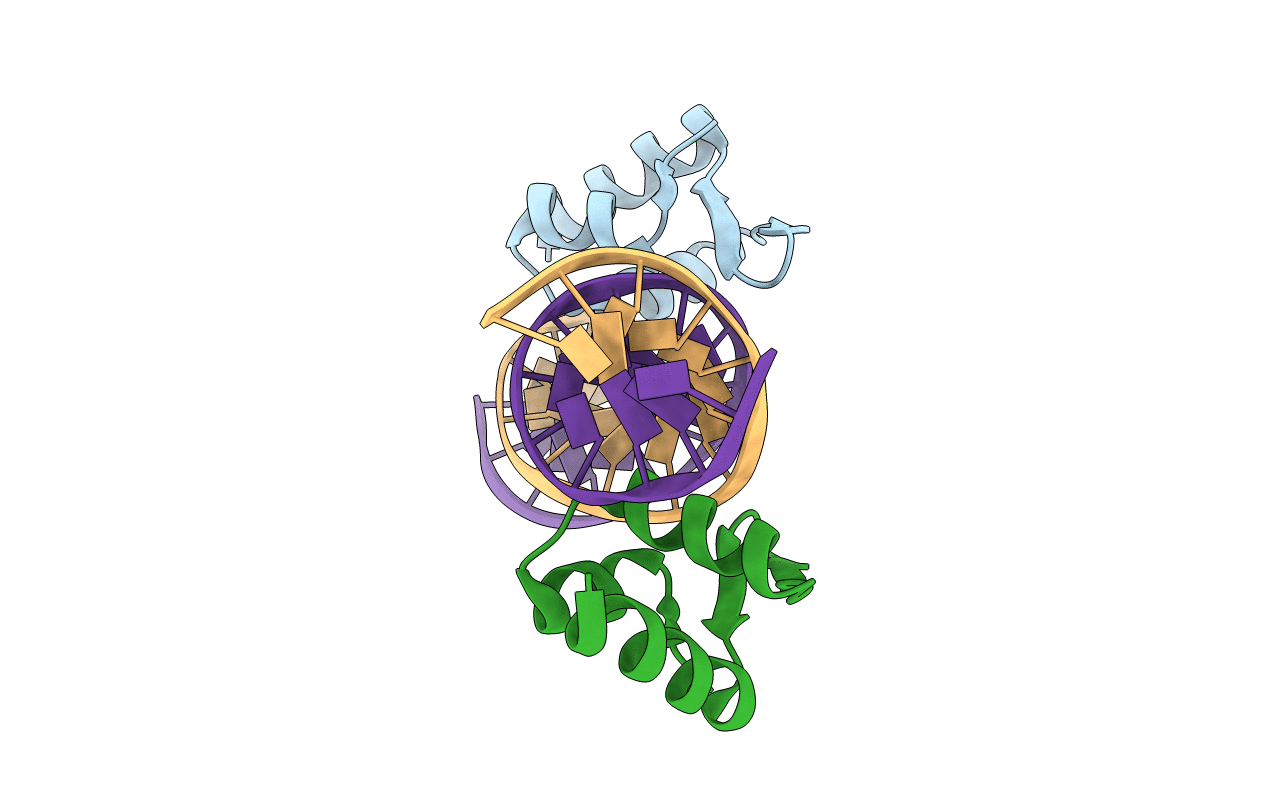
Deposition Date
2022-05-12
Release Date
2022-08-10
Last Version Date
2024-02-14
Entry Detail
PDB ID:
8CSH
Keywords:
Title:
Structure of the DNA binding domain of pSK1 Par partition protein bound to centromere DNA
Biological Source:
Source Organism:
unidentified plasmid (Taxon ID: 45202)
synthetic construct (Taxon ID: 32630)
synthetic construct (Taxon ID: 32630)
Host Organism:
Method Details:
Experimental Method:
Resolution:
2.25 Å
R-Value Free:
0.24
R-Value Work:
0.20
R-Value Observed:
0.20
Space Group:
C 1 2 1


